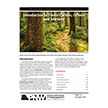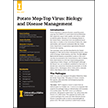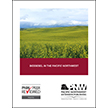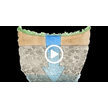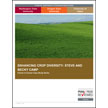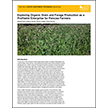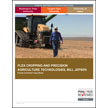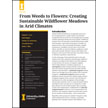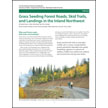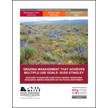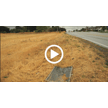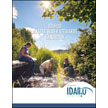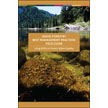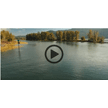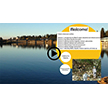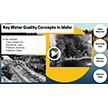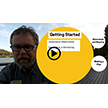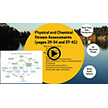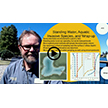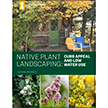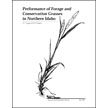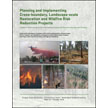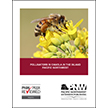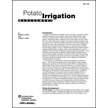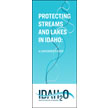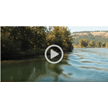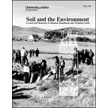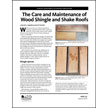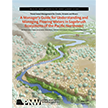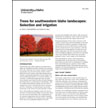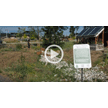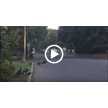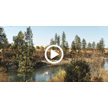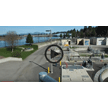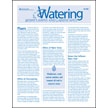Natural Resource Conservation
Introduction to Forest Carbon, Offsets and Markets
Learn the basics of forest carbon, offsets and markets in this 18-page publication. Forest owners, land managers, natural resource experts and other interested landowners will find its discussion...
Answers to Common Questions about Greenhouse Gases
Because climate change is one of the most urgent issues of our time, meaningful public discourse about it requires a basic understanding of the types of greenhouse gases (GHGs) involved, where they...
Biodiesel in the Pacific Northwest
With world demand for green energy sources growing exponentially, alternative fuel is definitely a market worth knowing more about. Biodiesel, an alternative fuel produced from fats like vegetable...
Bio-swales for Natural Stormwater Treatment
Stormwater runoff carries lots of pollution from roads, parking lots and other impervious surfaces in urbanized areas. Bioinfiltration swales offer a natural stormwater treatment solution in many...
Enhancing Crop Diversity: Steve and Becky Camp (Farmer to Farmer Case Study Series)
Steve and Becky Camp farm near LaCrosse, Washington, in an area receiving about 12-14 inches of annual precipitation. In this publication, the Camps discuss their strategy for diversifying and...
Exploring Organic Grain and Forage Production as a Profitable Enterprise for Palouse Farmers
Demand for organic grain has outpaced actual U.S. grain production in recent years. Yet little is known about organic grain production in the Palouse, likely because it comprises a small portion of...
Flex Cropping: Bill Jepson (Farmer to Farmer Case Study Series)
Bill Jepson farms in northeastern Oregon, in an area receiving 12 inches or less of annual precipitation. In this publication, Bill Jepson discusses his operation's strategy for flex cropping to...
From Weeds to Flowers: Creating Sustainable Wildflower Meadows in Arid Climates
Wildflower meadows have the potential to benefit homeowners, public land managers and commercial property caretakers in numerous ways. They can beautify landscapes, simplify maintenance, strengthen...
Grass Seeding Forest Roads, Skid Trails, and Landings in the Inland Northwest
Sediments are one of the main nonpoint sources of pollution for lakes, rivers and streams in the Inland Northwest. This eight-page publication (including cover) shares strategies for protecting...
This publication is part of the Rancher-to-Rancher Case Study Series: Increasing resilience among ranchers in the Pacific Northwest. Authors: Tipton D. Hudson, Sonia A. Hall, J. Shannon Neibergs,...
$6 Crayfish are freshwater crustaceans, distantly related to the lobster. Their aquatic impact is significant and fascinating, yet their profile and presence remain mysterious to many Idahoans.
Highway Districts Protecting Clean Water
Stormwater runoff carries lots of pollution from roads, including tire wear dust, drips of oil and other fluids, and plastic trash that's tossed aside. But Idaho's Kootenai County regional highway...
IDAH2O Master Water Stewards Handbook
The official handbook for University of Idaho Extension's Master Water Stewards trained to conduct water quality monitoring in Idaho lakes and streams. The handbook explains the program and...
Idaho Forestry Best Management Practices Field Guide: Using BMPs to Protect Water Quality
This practical guide will help forest landowners, managers and operators apply Idaho's mandatory forestry BMPs. Contents include (1) the science related to forests, forest hydrology, aquatic...
Inland Pacific Northwest Pasture Calendar
The Inland PNW Pasture Calendar is a comprehensive guide intended to help improve grassland management of forage-livestock systems in the region. From eight chapters and eighteen appendices, learn...
Introduction to Clean Water Video Series
Want to learn about how you can protect clean water in our lakes, streams and aquifers? This University of Idaho Extension video introduces ways to protect clean water and includes information on...
Master Water Stewards Intro and Welcome Video
This short video welcomes and introduces participants to the IDAH2O Master Water Stewards online version of the classroom portion of the certification workshop. Author, producer: Jim Ekins 3:06
Master Water Stewards Module 1: Introduction to IDAH2O Master Water Stewards
The first of seven educational learning modules for the IDAH2O Master Water Stewards citizen-science water-quality monitoring program covers an introduction to the program, the broader meaning of...
Master Water Stewards Module 2: Key Water-Quality Concepts in Idaho
The second of seven educational learning modules for the IDAH2O Master Water Stewards citizen-science water-quality monitoring program presents a broad, "30,000-foot" view of the key concepts...
Master Water Stewards Module 3: Getting Started as an IDAH2O Master Water Steward
The third of seven educational learning modules for the IDAH2O Master Water Stewards citizen- science water-quality monitoring program focuses on specific things any steward needs to know and do...
Master Water Stewards Module 4: Stream Habitat Assessments
The fourth of seven educational learning modules for the IDAH2O Master Water Stewards citizen-science water-quality monitoring program focuses on habitat assessment, which is conducted only once a...
Master Water Stewards Module 5: Physical and Chemical Stream Assessments
The fifth of seven educational learning modules for the IDAH2O Master Water Stewards citizen-science water-quality monitoring program includes the Physical Assessment: observations of a stream's...
Master Water Stewards Module 6: Stream Biology
In the sixth of seven educational learning modules for the IDAH2O Master Water Stewards citizen-science water-quality monitoring program, you'll complete a Stream Biological Assessment. Stream...
Master Water Stewards Module 7: Standing-Water Assessments, Aquatic Invasive Species
The seventh of seven educational learning modules for the IDAH2O Master Water Stewards citizen-science water-quality monitoring program discusses aquatic invasive species, like non-native algae,...
Native Plant Landscaping: Curb Appeal and Low Water Use
Many property owners don't fully realize that native plants are economical and effective solutions for use in landscape design, particularly since Idaho's climate is so weather-dependent. This...
Performance of Forage and Conservation Grasses in Northern Idaho
This publication summarizes the methods and results of two University of Idaho multi-year grass studies that aimed to evaluate the productivity of various perennial, cool-season grasses for...
This guide describes the process the Klamath-Lake Forest Partnership (KLFHP) has used to plan and implement cross-boundary restoration projects to achieve improved forest health conditions on large...
Pollinators in Canola in the Inland Pacific Northwest
Pollinators play an important role in crop productivity. Unfortunately, myriad pressures are causing their populations to decline steeply. While a single approach to solving the pollinator crisis...
Efficient irrigation management can increase marketable yield while reducing production costs by conserving water, energy and nitrogen fertilizer and while reducing potential groundwater...
Protecting Streams and Lakes in Idaho: A Landowner's Guide
$1 "Riparian" lands along the edges of lakes and rivers are home to many plants that, together, act as a buffer and first line of defense to protect local waterways and lakes. This brochure-style...
Protecting the Source: How Idaho Aquifers Work
Many homeowners and landowners have never had to manage a water well or septic system. This is highly problematic, because mismanagement harms the environment and the health of the private owner.
Protecting the Source: Protecting Drinking Water Wells
Many homeowners and landowners have never had to manage a water well or septic system. This is highly problematic, because mismanagement harms the environment and the health of the private owner.
Riparian Vegetated Buffers Protect Land and Streams
The best and cheapest way to protect your land from eroding away and protect clean water and fish habitat is to maintain streamside and lakeshore vegetation. This University of Idaho Extension...
Sagebrush Wildflowers: From Bloom to Seed
Imperiled sagebrush ecosystems and the wildflowers they harbor support countless wildlife species. This 24" x 36" poster illustrates the progression of 31 Great Basin wildflowers from bloom to seed...
Soil and the Environment: A Land and Homesite Evaluation Handbook and Training Guide
$4 Land and homesite evaluation allows individuals to make wise soil and land management decisions as well as conserve Idaho's most valuable natural resource: soil. The official guide for...
The Care and Maintenance of Wood Shingle and Shake Roofs
Wood shingles and shakes can provide years of service if properly installed and maintained. Learn what kinds of wood make the best roofing material; how to protect against fungus, moss and lichen;...
Threat-based Management for Creeks, Streams and Rivers
Learn how to rapidly assess and manage water systems in this 66-page fully illustrated guide. Designed for those with little to some knowledge of riparian ecology, this decision-support tool not...
Trees for Southwestern Idaho Landscapes: Selection and Irrigation
To paraphrase a Chinese proverb, it's always a good time to plant a tree, but the dry southwestern Idaho climate might give you second thoughts. This bulletin will restore hope. Learn how to choose...
Urban Farming For Healthy Water
Community-based agriculture and home rain gardens can help protect water with soil conservation and wise water use. In this University of Idaho Extension video, the Gathering Garden stands as a...
Urban Forests and Protecting Lakes and Streams
Urban Forests have a large positive impact on stormwater pollution and volume. In this University of Idaho Extension video, we will explore how cities' street trees can absorb pollution and slow...
Urban Greenspaces for Clean Water
Stormwater runoff carries lots of pollution from parking lots and other impervious surfaces in urbanized areas. Greenspaces offer an opportunity to filter and treat stormwater through natural...
Wastewater Treatment Plants Removing Phosphorous
Small increases in phosphorous, a plant nutrient, can start big changes in aquatic nuisance plant life. This University of Idaho Extension video explains how phosphorous removal by wastewater...
Watering Home Lawns and Landscapes
Wise water use saves homeowners money, enhances property values and supports a watershed. This publication details the liabilities of incorrect watering and the benefits of proper irrigation by...







